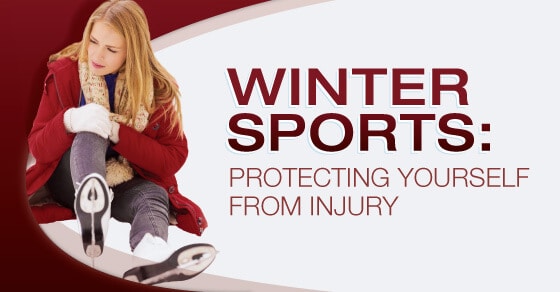
For many in the Tri-State, a few inches of snow means a day off from our normal routine of school and work. It’s a time to cast off our regular daily activities in favor of playing in the snow, followed by warming up indoors with hot chocolate. Others anxiously await the winter season so they can hit the ski slopes or participate in a hockey league. You might think of winter as a time to cuddle up in a blanket and wait patiently for spring to arrive, but it’s possible to enjoy the ice and snow by participating in winter sports.
Winter Sports – Fun For Everyone
Winter sports and activities rely on ice and snow as a crucial element for fun. Skiing, snowboarding, sledding, and snowmobiling can’t happen without a significant layer of snow, and ice skating and hockey need ice both indoors and outside. Every winter, the slopes see more than 50 million skiing and snowboarding visits, while more than a half million people in the US play ice hockey. And of course, there are untold thousands of kids and adults out on sleds every time there is a significant snowfall. All in the name of wintertime fun.
Wintertime Sports Injuries
Unfortunately, any time you’re talking about snow or ice, you’re also talking about injuries. Even the most careful among us can get hurt participating in wintertime sports. Some of the more common injuries include:
- Broken bones
- Sprains
- Lacerations
- Head injuries
- Spinal cord injuries
Accidents happen, and people get hurt – but there are steps you can take to minimize risk.
Safety in Winter Sports
No matter what winter sport interests you, there are precautions you’ll want to take in order to enjoy it safely.
- Protective gear – Depending on the activity, there are numerous options for protective gear. Padding, braces, and helmets are all important – and in some cases, necessary – pieces of equipment for winter sports. Face masks, mouth guards, and specialized clothing are also important.
- Appropriate instruction – Anyone learning to skate, ski, or snowboard can benefit from professional instruction. Learning the basics of how to start, control your speed, and stop in your chosen activity, and practicing those skills will help you to enjoy the activity so much more. And while it might seem strange, learning how to fall is key to preventing more serious injury.
- Preparation – Sometimes injury occurs because your body isn’t fully prepared for the activity. There is a reason most pro athletes stretch and warm up before competition: warming up your muscles makes you less susceptible to injury if you take a tumble.
- Good sense – Understanding your limitations can go a long way toward keeping you healthy. Don’t be embarrassed to spend all of your time on the bunny slope. You’ll get better with time and practice.
Safe Sledding
Even if you’re not planning on learning to ski or ice skate, it’s hard to resist the lure of a snow day spent sledding. Sledding doesn’t take any special skill, but it does take some common sense. If you’re going to be joining the throngs of kids on the golf course, make sure you follow these guidelines:
- Dress warmly
- Choose a hill with a flat area at the bottom to aid in stopping
- Avoid hills that end near a street or parking lot
- Avoid hills near ponds, trees, fences, or other hazards
- Only sled in a front-facing, sitting position – and never headfirst
- Return to the top of the hill by walking up the side, never straight up the middle
- Keep a cell phone handy in case you need to call for help
Even though the groundhog has predicted an early spring, there may still be wintry weather on tap before the daffodils bloom. Have fun, but be safe – and if you’re injured by someone’s negligence during winter sporting activities, remember: talking with an attorney experienced in personal injury cases can help to preserve your legal rights.
